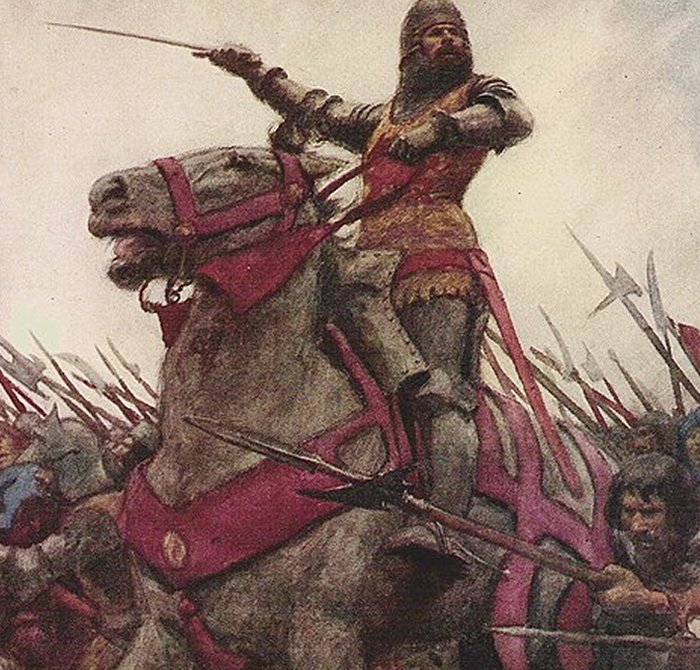Owain Glyndwr: Famous Medieval Welsh Warrior Prince And Symbol Of Independence
A. Sutherland - AncientPages.com - At the beginning of the 15th century, an uprising against the English resulted in the first and only Welsh-speaking parliament.
Owain Glyndwr by A.C.Michael. Arthur Cadwgan Michael (1881-1965) - Public Domain
One man was particularly unhappy with the chaos in his country. His name was Owain Glyndwr, and he is today known as the famous medieval Welsh warrior prince who fought against England. Owain Glyndwr is also widely recognized as a symbol of Welsh independence and patriotism.
Who Was Owain Glyndwr?
Owain Glyndwr was born in 1359 into a powerful family of the Anglo-Welsh nobility during a time of relative peace between the tribes of Wales and the English aristocracy.
His father, Gruffydd Fychan II, was a hereditary prince of Powys Fadog and Lord of Glyndyfrdwy, one of the lines of Welsh lords and princes who traced their royal lineage back to before the Norman conquest. His mother, Elen Ferch Tomas Ap Llywelyn of Deheubarth, was also of noble blood.
When Owain was 11 years old, his father died, and the young prince was fostered in the household of Sir David Hanmer, an Anglo-Welsh judge. Sir David Hanmer wanted Owain to study law at the Inns Of Court, but the young man never became a "man of law."
Owain Glyndwr was educated in England. He trained as a soldier and served with distinction for the English King before returning to Wales as a wealthy man ready to marry.
Glyndŵr statue at Cardiff city hall. Image credit: Seth Whales - Public Domain
However, he soon noticed people in his country were intimidated, and the law had no justice. The people of Wales desperately needed a leader who could change the situation in the country.
Owain Glyndwr's Revolt Against England
On September 16, 1400, Glyndwr instigated the Welsh Revolt against the rule of Henry IV of England. The immediate spark for Owain's revolt was his quarrel with his neighbor Reginald de Grey, Lord of Ruthin, who had stolen some land. Grey was close to the King, and the argument could not be resolved.
Glyndwr gathered loyal supporters around him, established an army at Ruthin, raised his battle flag, and started to drive out the English. He led a revolt against King Henry IV of England and rapidly gained power.
Shortly after Glyndwr's forces defeated Ruthin, the Welsh warrior followed up with attacks throughout north Wales. It was not long before he could claim the title Prince of Wales.
However, although initially successful, Glyndwr's uprising was eventually put down. The Englishmen were unhappy with the situation. The Englishmen sent many soldiers across north Wales, sacking and burning everything. In those days, the English army was Europe's largest and most effective.
Glyndwr was a wanted man. He and his supporters were forced to hide in the mountains. They stayed there the whole winter before emerging again the following year with a renewed campaign against the Englishmen.
Equestrian statue in Corwen. Image credit: Michael Garlick - CC BY-SA 2.0
For a brief time, the Prince of Wales and his army seized some castles such as Harlech, Conwy, and Aberystwyth, but the English army soon retook the fortresses, and Glyndwr was declared an outlaw. The English King Henry IV was determined to catch the Welsh warrior, but many loyal people surrounded him.
Llywelyn – Old Welsh Man Who Was Loyal To The Welsh Prince Until The End
One of them was Llywelyn ap Gruffydd Fychan, a local landowner from the village of Caeo. For many weeks, the Englishmen tried to force him to reveal the hiding place of Owain Glyndwr, but the older adult refused to say anything.
Eventually, king Henry IV lost his patience and ordered him to torture Llywelyn. However, Llywelyn was a patriot and loyal supporter of Owain Glyndwr and refused to say anything. So, King Henry IV decided to execute the old Welsh man. Llywelyn was dragged to the center of Llandovery and publicly executed in the same manner as Sir William Wallace, the brave Scottish knight and legendary hero.
What happened to Owain Glyndwr is not entirely known, but one thing is sure, he was never betrayed by his people and quietly disappeared into obscurity.
Written by – A. Sutherland AncientPages.com Staff Writer
Updated on December 21, 2022
Copyright © AncientPages.com All rights reserved. This material may not be published, broadcast, rewritten or redistributed in whole or part without the express written permission of AncientPages.com
Expand for referencesReferences:
Davies R. R., Owain Glyndwr - Prince Of Wales
Glanmor W., Owain Glyndŵr
Owain Glyndŵr (Wikipedia)
More From Ancient Pages
-
 Mayan Underwater Tunnels With Bones Of Humans, Elephant-Like Creatures, Tigers, Bears, Tigers And Extinct Horses, Rediscovered In Yucatan
Archaeology | Jan 19, 2018
Mayan Underwater Tunnels With Bones Of Humans, Elephant-Like Creatures, Tigers, Bears, Tigers And Extinct Horses, Rediscovered In Yucatan
Archaeology | Jan 19, 2018 -
 Camas Plant Stewardship In The Pacific Northwest Dates Back More Than 3,500 Years
Archaeology | May 23, 2024
Camas Plant Stewardship In The Pacific Northwest Dates Back More Than 3,500 Years
Archaeology | May 23, 2024 -
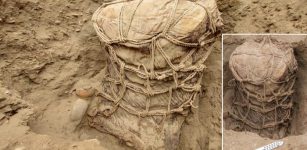 A 500-Year-Old Funerary Bundle And Pottery Probably Belonging To Ychsma Culture – Unearthed Near Lima, Peru
Archaeology | May 22, 2023
A 500-Year-Old Funerary Bundle And Pottery Probably Belonging To Ychsma Culture – Unearthed Near Lima, Peru
Archaeology | May 22, 2023 -
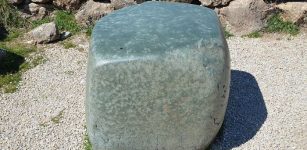 Mystery Of The Ancient Giant Wish Stone At Hattusa
Featured Stories | Oct 1, 2019
Mystery Of The Ancient Giant Wish Stone At Hattusa
Featured Stories | Oct 1, 2019 -
 Ancient Egyptian Tombs With Stunning Trove Of Artifacts And Human Remains Unearthed In Saqqara
Archaeology | Jan 17, 2024
Ancient Egyptian Tombs With Stunning Trove Of Artifacts And Human Remains Unearthed In Saqqara
Archaeology | Jan 17, 2024 -
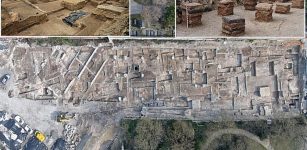 A Huge Site Dated To Roman-Era Unearthed In Reims (Marne), France
Archaeology | Mar 20, 2023
A Huge Site Dated To Roman-Era Unearthed In Reims (Marne), France
Archaeology | Mar 20, 2023 -
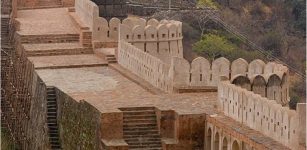 Magnificent And Massive Great Wall Of India – Astonishing Ancient Structure Shrouded In Secrecy
Civilizations | Jul 7, 2015
Magnificent And Massive Great Wall Of India – Astonishing Ancient Structure Shrouded In Secrecy
Civilizations | Jul 7, 2015 -
 Curly Hair Protected The Brain Of Early Humans And Helped It Grow
Human Beginnings | Aug 31, 2023
Curly Hair Protected The Brain Of Early Humans And Helped It Grow
Human Beginnings | Aug 31, 2023 -
 Why Did Ancient Romans Build So Many Straight Roads?
Ancient History Facts | Aug 9, 2017
Why Did Ancient Romans Build So Many Straight Roads?
Ancient History Facts | Aug 9, 2017 -
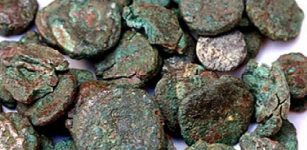 Thousands Of Ignored ‘Nummi Minimi’ Coins Found In Ancient Marea, Egypt With Hidden Fascinating History
Archaeology | Dec 10, 2023
Thousands Of Ignored ‘Nummi Minimi’ Coins Found In Ancient Marea, Egypt With Hidden Fascinating History
Archaeology | Dec 10, 2023 -
 Evidence Mendel Discovered The Laws Of Inheritance Decades Ahead Of His Time
Archaeology | Jul 12, 2022
Evidence Mendel Discovered The Laws Of Inheritance Decades Ahead Of His Time
Archaeology | Jul 12, 2022 -
 Alkonost – Mythical Bird Of Paradise In Slavic And Russian Folklore
Featured Stories | Jul 6, 2020
Alkonost – Mythical Bird Of Paradise In Slavic And Russian Folklore
Featured Stories | Jul 6, 2020 -
 Bizarre And Unexplained Phenomenon That Defied The Laws Of Nature
Featured Stories | May 12, 2018
Bizarre And Unexplained Phenomenon That Defied The Laws Of Nature
Featured Stories | May 12, 2018 -
 Mysterious Underground City In Brazil Could Re-Write Ancient History – Riddle Of The 12 Men – Part 2
Ancient Mysteries | Jan 26, 2022
Mysterious Underground City In Brazil Could Re-Write Ancient History – Riddle Of The 12 Men – Part 2
Ancient Mysteries | Jan 26, 2022 -
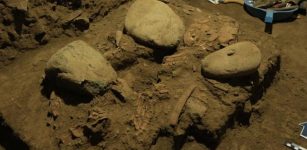 Mysterious Toaleans – Remains Of Unknown Humans Who Lived 8,000 Years Ago Discovered In The Leang Panninge Cave
Archaeology | Aug 26, 2021
Mysterious Toaleans – Remains Of Unknown Humans Who Lived 8,000 Years Ago Discovered In The Leang Panninge Cave
Archaeology | Aug 26, 2021 -
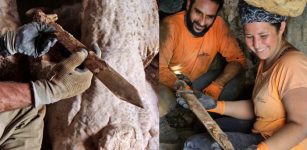 Four Rare And Incredibly Well-Preserved 1,900-Year-Old Roman Swords Found In Judean Desert
Archaeology | Sep 6, 2023
Four Rare And Incredibly Well-Preserved 1,900-Year-Old Roman Swords Found In Judean Desert
Archaeology | Sep 6, 2023 -
 Stone Box With Ancient Shell Llama Offering Found In Lake Titicaca
Archaeology | Aug 4, 2020
Stone Box With Ancient Shell Llama Offering Found In Lake Titicaca
Archaeology | Aug 4, 2020 -
 3.2 Million-Year-Old ‘Lucy’ Could Walk On Two Legs – First Hominin Muscle Reconstruction
Archaeology | Jun 20, 2023
3.2 Million-Year-Old ‘Lucy’ Could Walk On Two Legs – First Hominin Muscle Reconstruction
Archaeology | Jun 20, 2023 -
 Sobek – Enigmatic Crocodile God Of Ancient Egypt
Civilizations | Sep 5, 2015
Sobek – Enigmatic Crocodile God Of Ancient Egypt
Civilizations | Sep 5, 2015 -
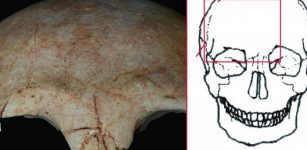 Ancient Warfare And Continuous Rise In Global Population – Is There A Connection?
Archaeology | Sep 13, 2021
Ancient Warfare And Continuous Rise In Global Population – Is There A Connection?
Archaeology | Sep 13, 2021

